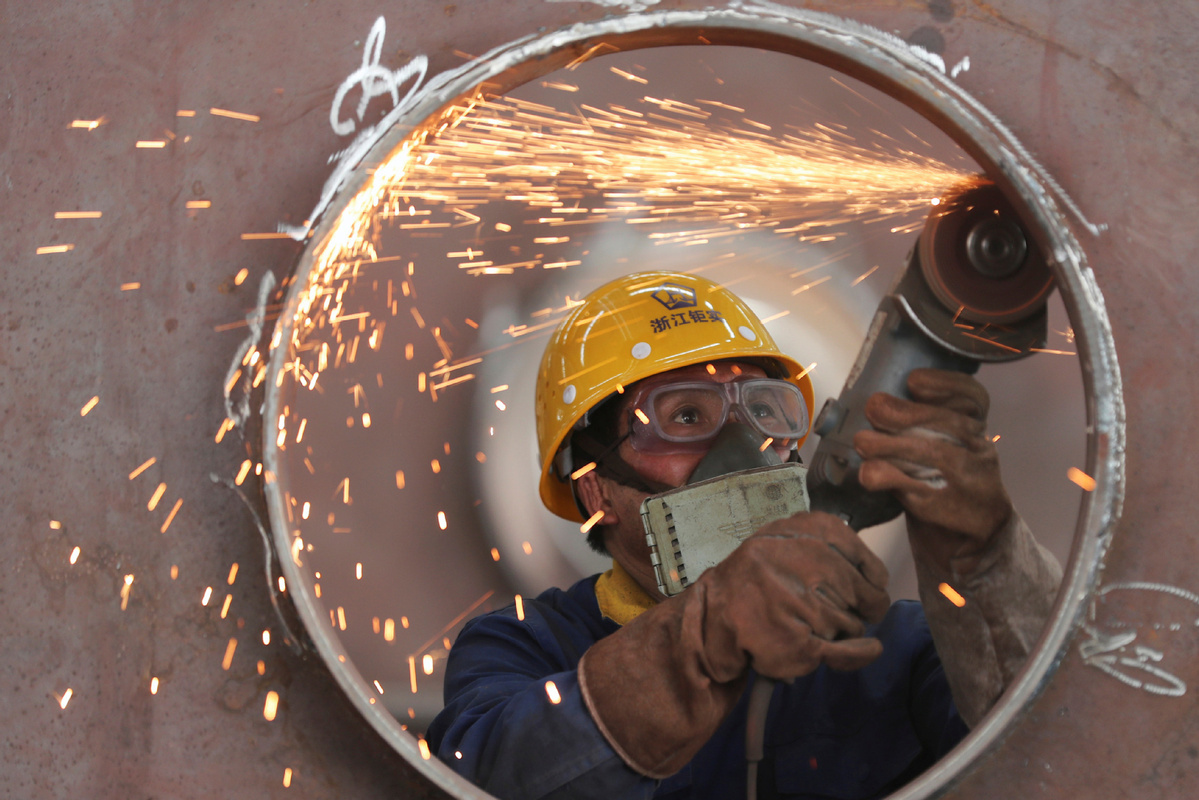
An employee works on a production line manufacturing steel structures at a factory in Huzhou, Zhejiang province, on May 17, 2020. (Photo: Agencies)
BEIJING - In coping with the disruptions from the COVID-19 epidemic and global economic slowdown, China's leadership has emphasized the need to steer the world's second-largest economy as if fighting a protracted war.
It called for the quickened establishment of a new development pattern which gives full play to the advantages of a huge domestic market, so that domestic and foreign markets can boost each other. It also said the domestic market should be the mainstay, emphasizing the need to tackle challenges from a protracted-war perspective.
"Since many problems we face are long- and medium-term, resolving such problems is like fighting a protracted war," the Political Bureau of the Communist Party of China (CPC) Central Committee noted in a meeting on July 30 where arrangements for the economic work for the second half of the year were made.
Although this new development pattern puts more emphasis on self-sufficiency, it's improper to interpret it as a policy shift to less opening-up or less active interaction with foreign markets.
DUAL CIRCULATION
A commentary run by the People's Daily, the CPC flagship newspaper which local authorities tend to take as a reference for policy interpretation, noted that taking the domestic market as the mainstay is "absolutely not an operation behind closed doors." It is there to exploit the potential of domestic market demands to facilitate better connectivity between domestic and foreign markets for more resilient and sustainable growth.
The new development pattern, or dual circulation, is more of a solution proposed by China in tough times to boost both its economic resilience and that of the world's.
As overseas demand is expected to remain subdued due to the global coronavirus pandemic, the political bureau meeting urged efforts to keep expanding domestic demand, counteract the impact of COVID-19, boost final consumption and create conditions for consumption upgrading.
If the demand of the country's 1.4-billion-people market (and its 400 million middle-income earners in particular) is properly unleashed and well met, it is expected to provide forceful support for China's economic recovery. A solid recovery of the Chinese economy will in turn help boost global morale in pursuing post-pandemic growth.
On the supply side, China has taken multi-pronged measures, from tax and fee cuts to targeted financing support, to protect the supply chain from succumbing to epidemic shocks and retain the vitality of market entities.
If the Chinese economy managed to rebound steadily, analysts say more spillover effects can be expected across the world.


